When my partner John and I embarked on an Atlantic crossing in our sailboat, The Dream, we expected challenges but hoped our preparations would see us through safely. One piece of equipment that proved invaluable was our Hydrovane wind pilot system. Though we didn’t use it much cruising the Mediterranean, during our crossing this gear really earned its keep.
Installing a wind pilot
Years before setting sail across the ocean, we had researched essential upgrades to prepare The Dream for offshore journeys. John diligently studied forums and books to compile a list of things we might need. One item that kept coming up was adding a wind pilot – a system that could steer using just the power of the wind. Experienced sailors swore by these devices for shorthanded crews.
After comparing options, John settled on the Hydrovane because of its reputation for strength and reliability. We had it installed back in 2017 while still coastal cruising. It was an expensive addition, but we saw it as a long-term investment in safety and comfort on future passages. Little did we know then how much we’d end up relying on it.

Our transatlantic route
Our journey from Portugal to Brazil covered over 3000 nautical miles, taking several weeks. It was roughly divided into four legs:
1. Cascais, Portugal to Madeira: We opted not to use our Hydrovane on this initial leg. Recent orca attacks on boats near Portugal made us wary of having the external rudder installed. Safety took priority over convenience.
2. Madeira to the Canary Islands: On calmer seas, we probably should have used the Hydrovane but admittedly chose the simpler autopilot out of complacency. A mistake we wouldn’t repeat again.
3. Canaries to Cape Verde: This passage we began relying on our Hydrovane instead of the power-draining autopilot. Over the next 1000 miles sailing downwind, it performed well in the mild winds and reduced our energy consumption significantly.
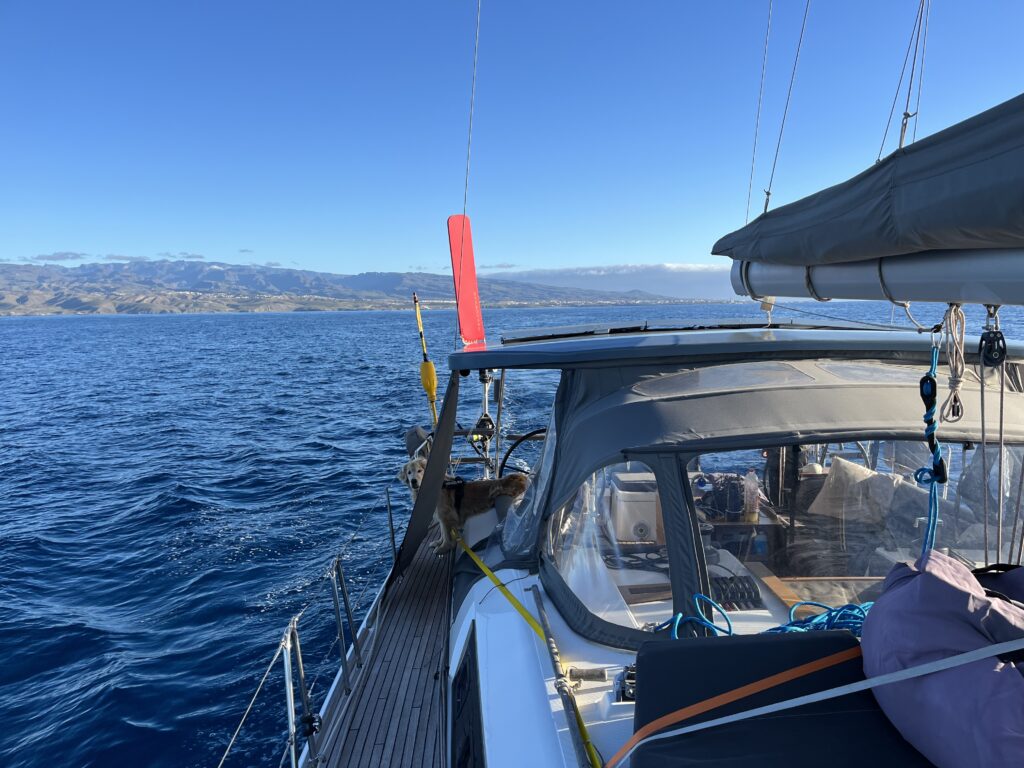
4. Cape Verde to Fernando de Noronha, Brazil: The longest leg of the crossing. It was here the Hydrovane paid for itself. On the third day of the ten day crossing, we started to experience difficulties getting the Hydrovane to hold a course, it would just start wandering erratically. We soon found that this was due to the amounts of sargassum seaweed accumulating on the Hydrovane rudder.
Disaster strikes
On day three of the leg from Cape Verde, we made a naïve mistake. As the Hydrovane had been struggling with the sargassum, we switched back to using the electric autopilot. What we didn’t realise was just how big a load this would put on it’s motor.
Two days later, grinding sounds signalled a catastrophe: the autopilot had overheated and died!
No amount of troubleshooting could revive it. We were over 500 miles from the African coast and the threat of hand-steering the rest of the way loomed large.
Kicking ourselves for not seeing the signs, we reinstated the Hydrovane and got it steering again. Paying close attention whenever the Hydrovane rudder needed clearing, and mentally flogging ourselves for having made such a stupid mistake in the first place!
Although it required constant attention, we would have faced days of hand-steering without it; a truly miserable prospect in the tropical heat.
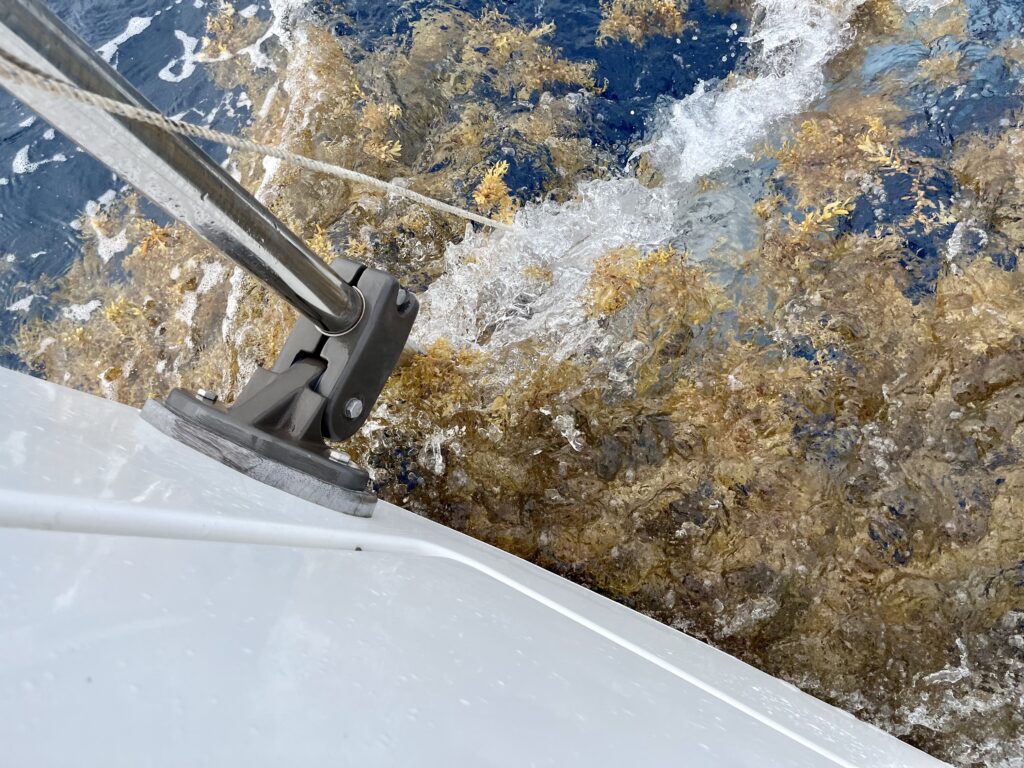
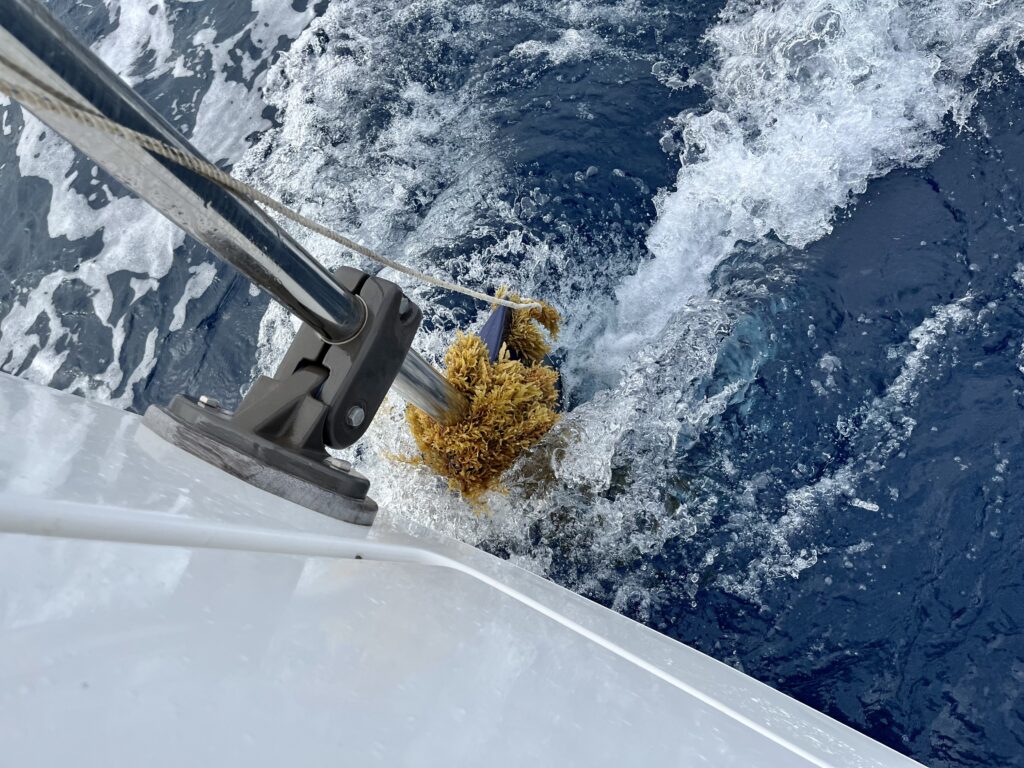
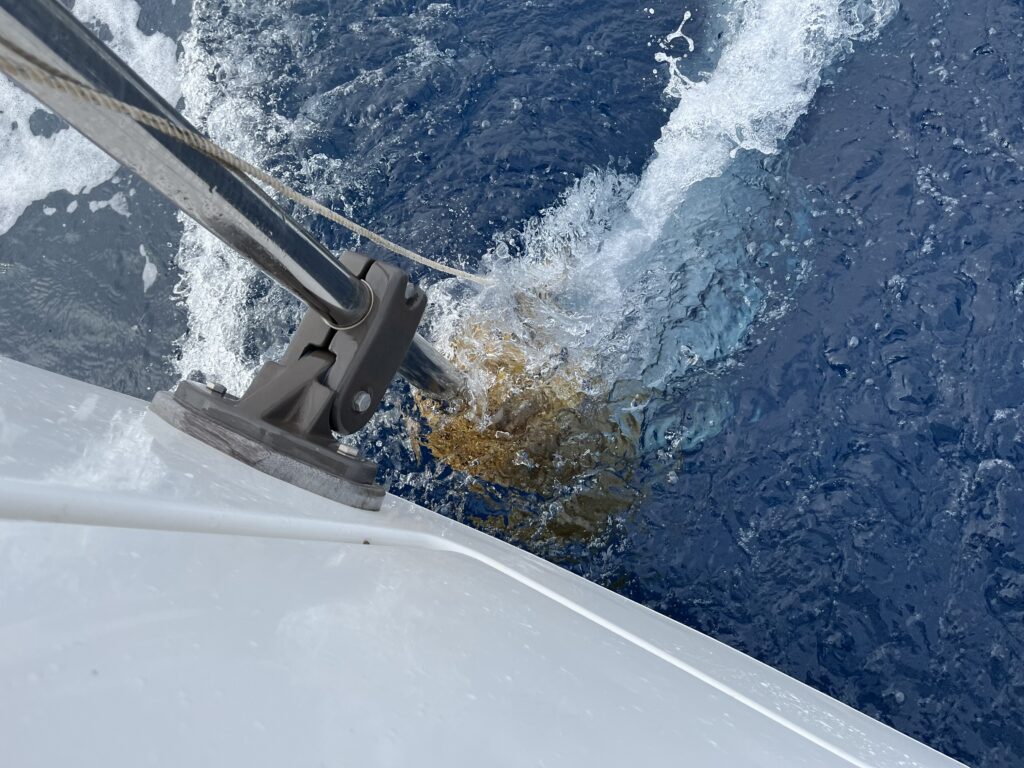
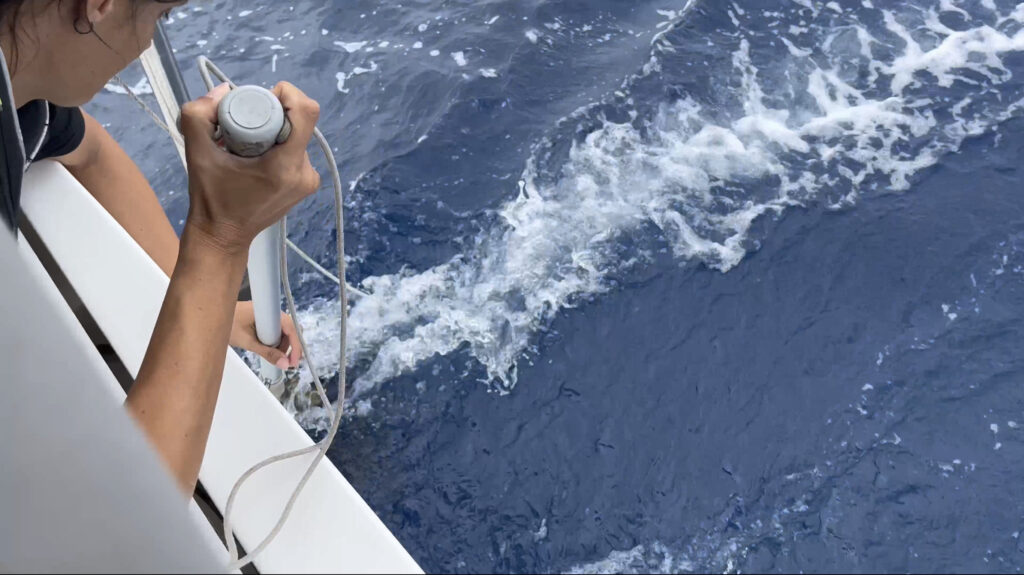

Implementing our backup plan
We still needed to motor through the windless doldrums that lie ahead. So, while I took on the chore of clearing the rudder with a boat hook every few minutes, John went into problem-solving mode.
Thanks to John’s foresight, we had kept a spare tiller autopilot aboard. These can be attached to a Hydrovane to electronically steer its rudder; a unique feature among wind pilot systems. The tiller autopilot would now become a critical part of our equipment. The first challenge was finding a way to securely mount it. After more brainstorming, John devised a scheme to employ our boarding plank, secured between the pushpit and stern railing, to build a base to which it could be attached. He carefully measured and drilled holes through the plank ends, and I helped by cutting leftover wood strips into spacers that we would use to keep the mounting plank level.
We also needed a secure, flat surface to attach the tiller bracket to, and John decided the spare aluminium plate from our hardtop project would work. For a no-slip base, we used some wood offcuts, sanding them to sit flush. The whole structure took time and care to assemble in the unsteady seas.
With the mount complete, John started work on the wiring, splicing together enough cable to run power from the battery bank near the engine and then back to the tiller autopilot. I helped by waterproofing the connections, and by using a file to modify a fuse case to fit the tiller pilot, which annoyingly needed just a slightly different size. Adaptability was key.

After a long day of careful work, we were ready for the moment of truth. With John at the helm and me standing by, we powered up the tiller pilot and watched anxiously. To our relief, it responded right away, smoothly following our course.
We motored ahead slowly at first, then sped up. Despite the choppy conditions, our DIY mounting held fast. The little autopilot kept us on course!
We were all so relieved to know we would not be hand steering nonstop to Brazil.
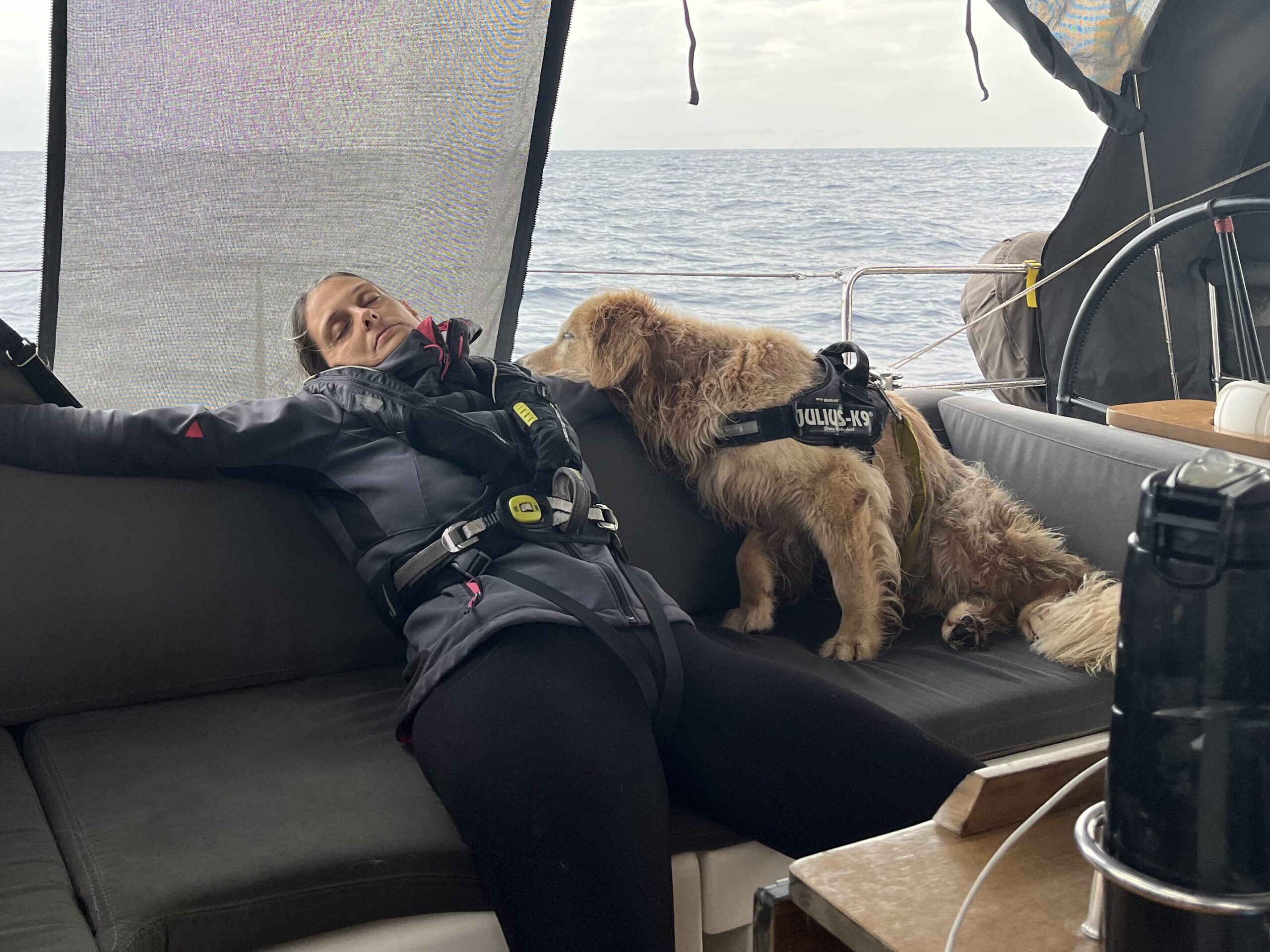
The rest of the journey
The makeshift steering worked well enough to continue down the Brazilian coast to Recife and on to Salvador. Though not the leisurely passage we’d envisioned, the challenges brought their own sense of accomplishment. We overcame issues through teamwork, preparation, and flexibility – all of which are skills that build confidence for our future voyages.
After installing a new primary autopilot in Brazil, we continued to rely on our Hydrovane for much of the next leg along the coast. Its sturdy design and ease of use made it our preferred pilot for the remainder of the journey to Grenada.
A wise investment
In our eyes our Hydrovane has proved itself a necessity, not a luxury. Despite the cost, installing it was one of the wisest decisions we made when preparing our boat for bluewater cruising. When disaster struck midway across the Atlantic, it steered us safely onward.
As we plan the next stage in our circumnavigation, the Hydrovane remains one of our most trusted crew members. I can’t imagine setting sail without it. For anyone preparing for offshore passages, I can’t recommend this equipment enough. It’s an investment that will pay for itself many times over.

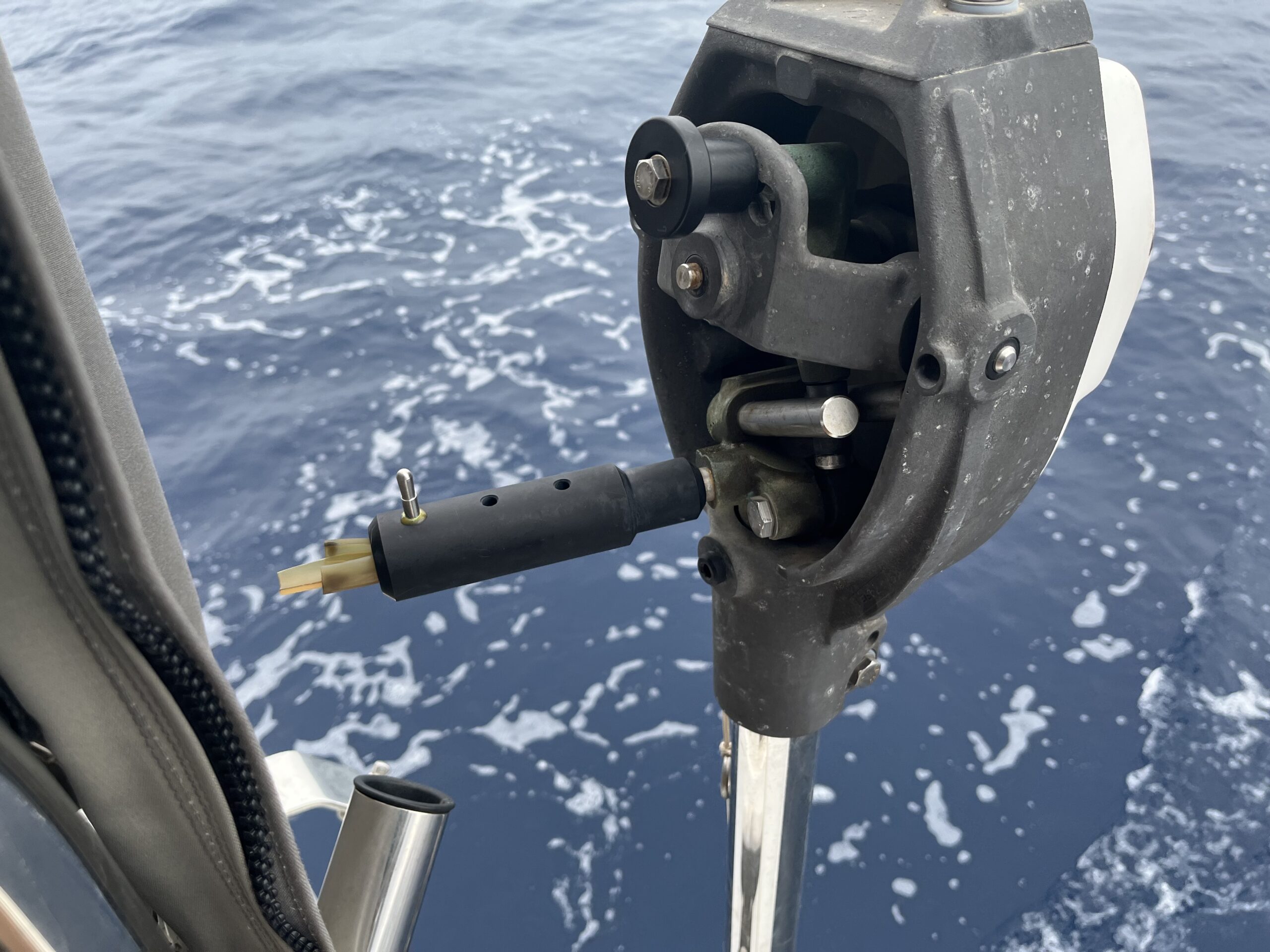







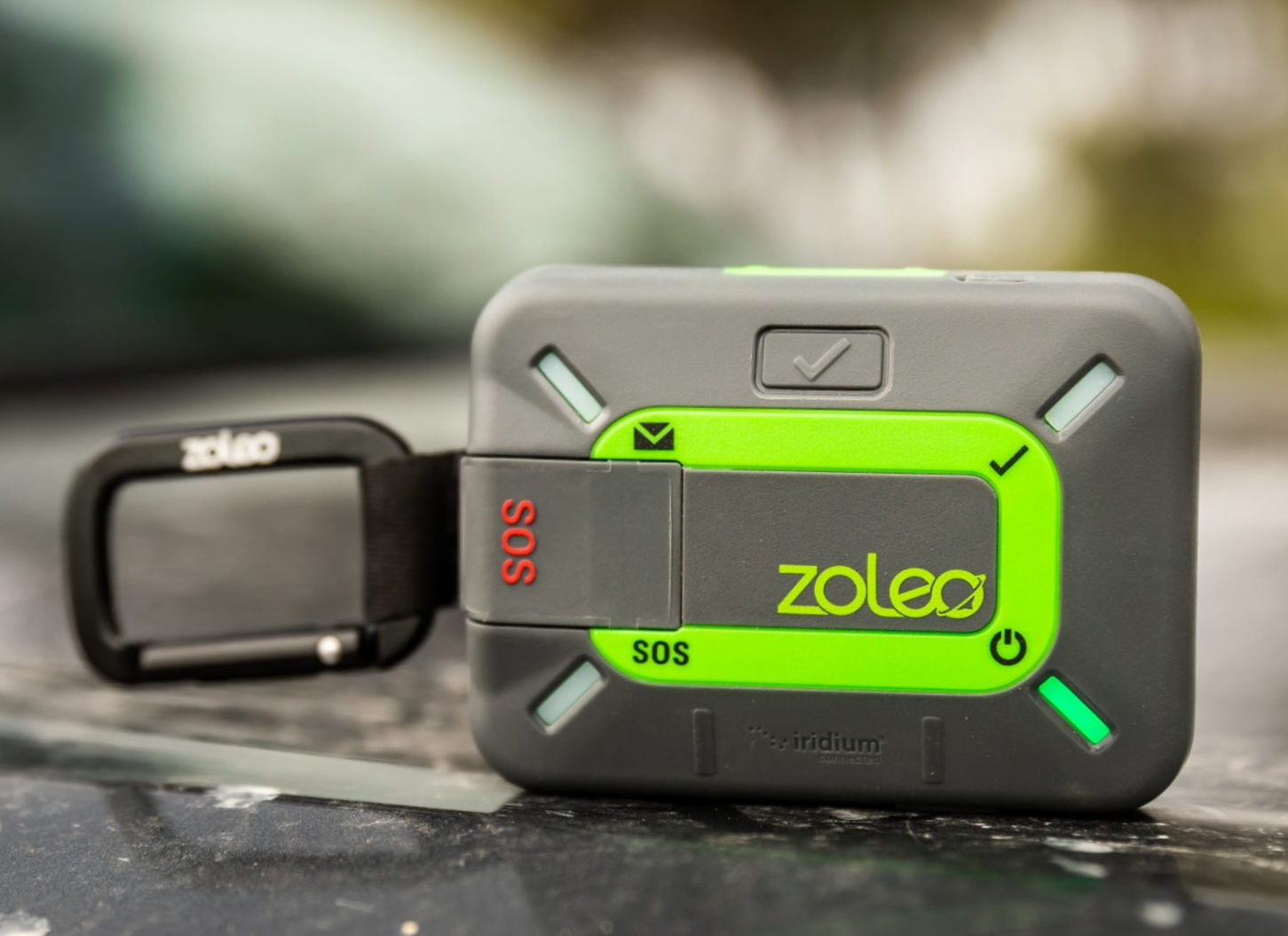
Informative and interesting article – thank you for sharing. Good luck and fair winds on your continuing adventure!